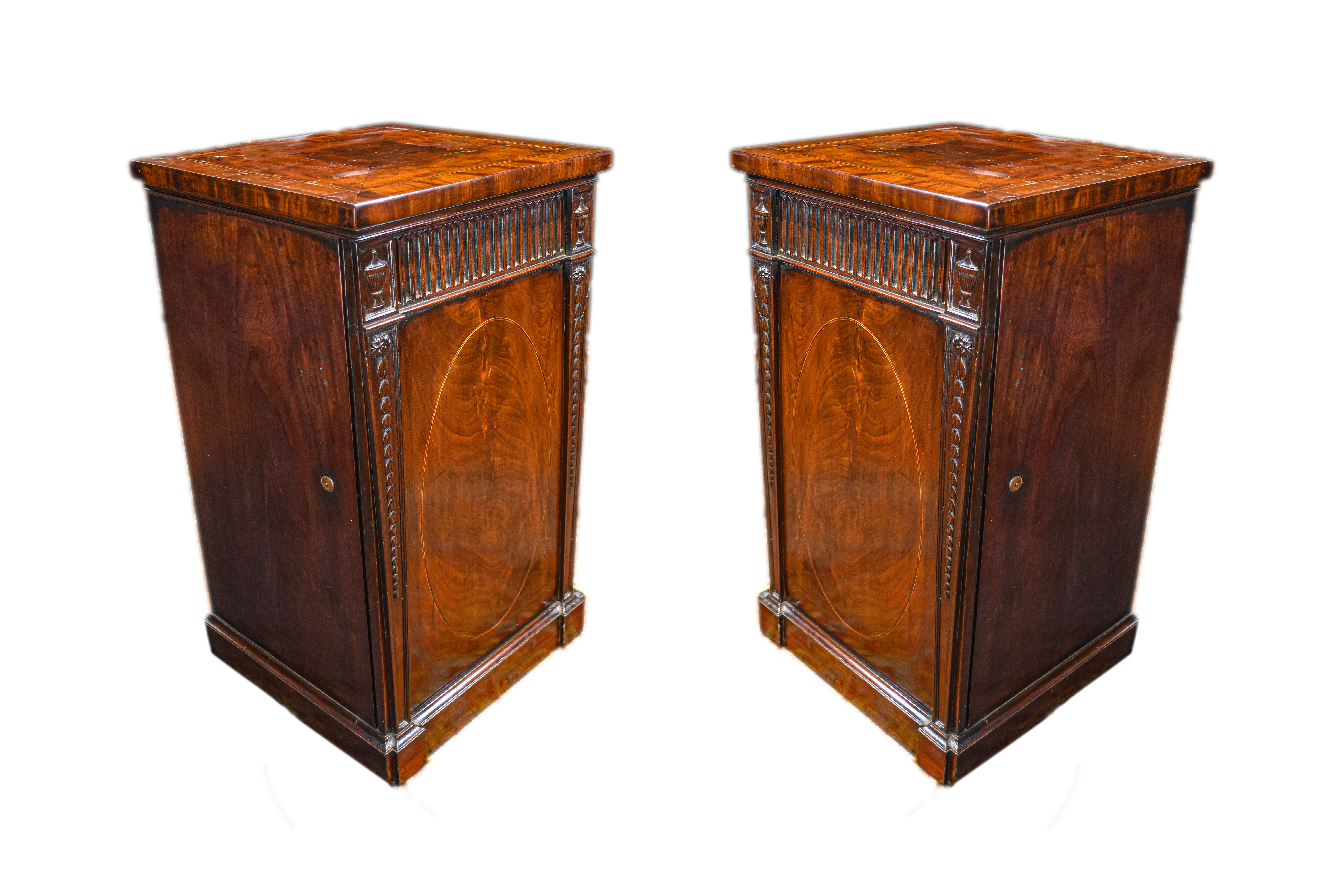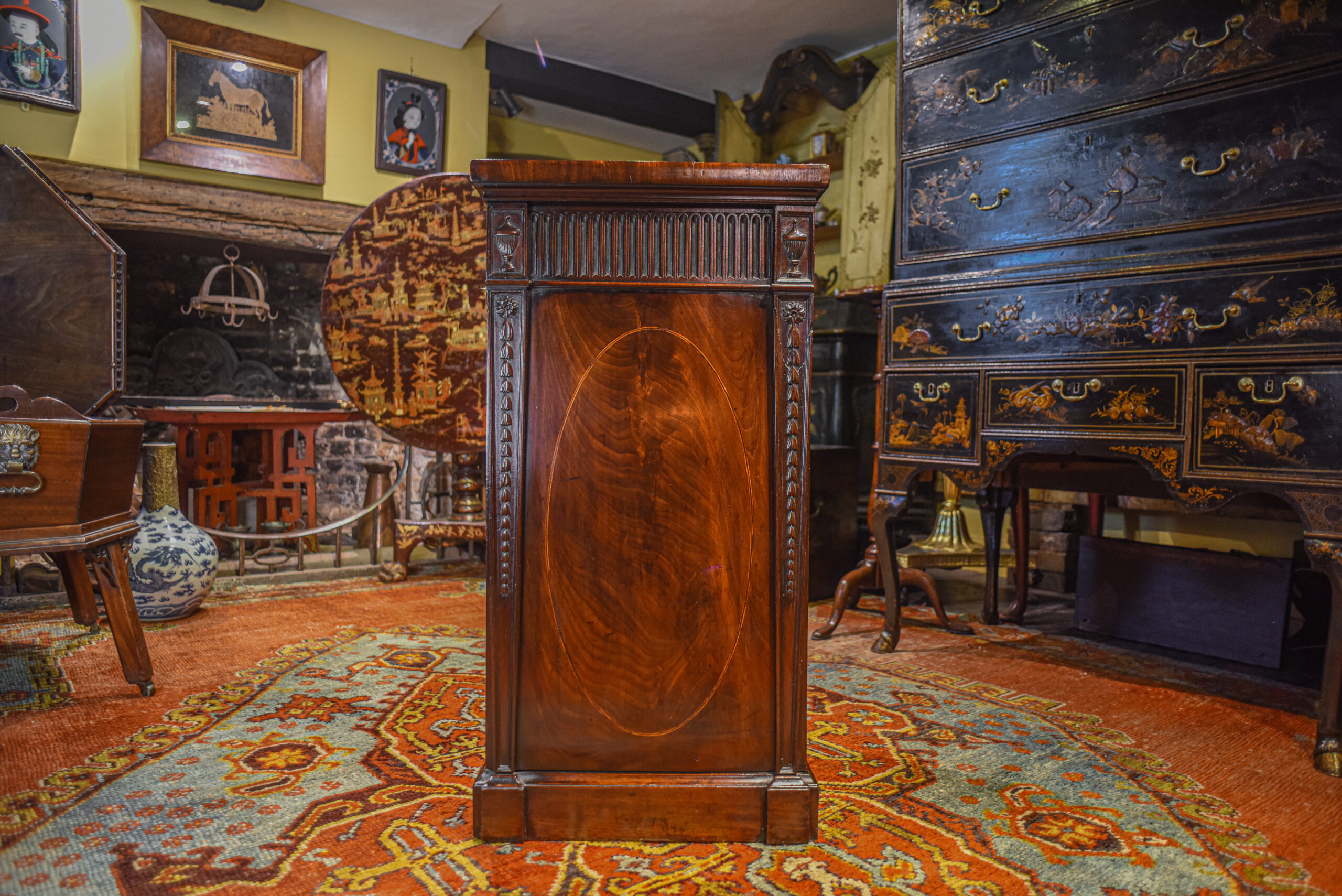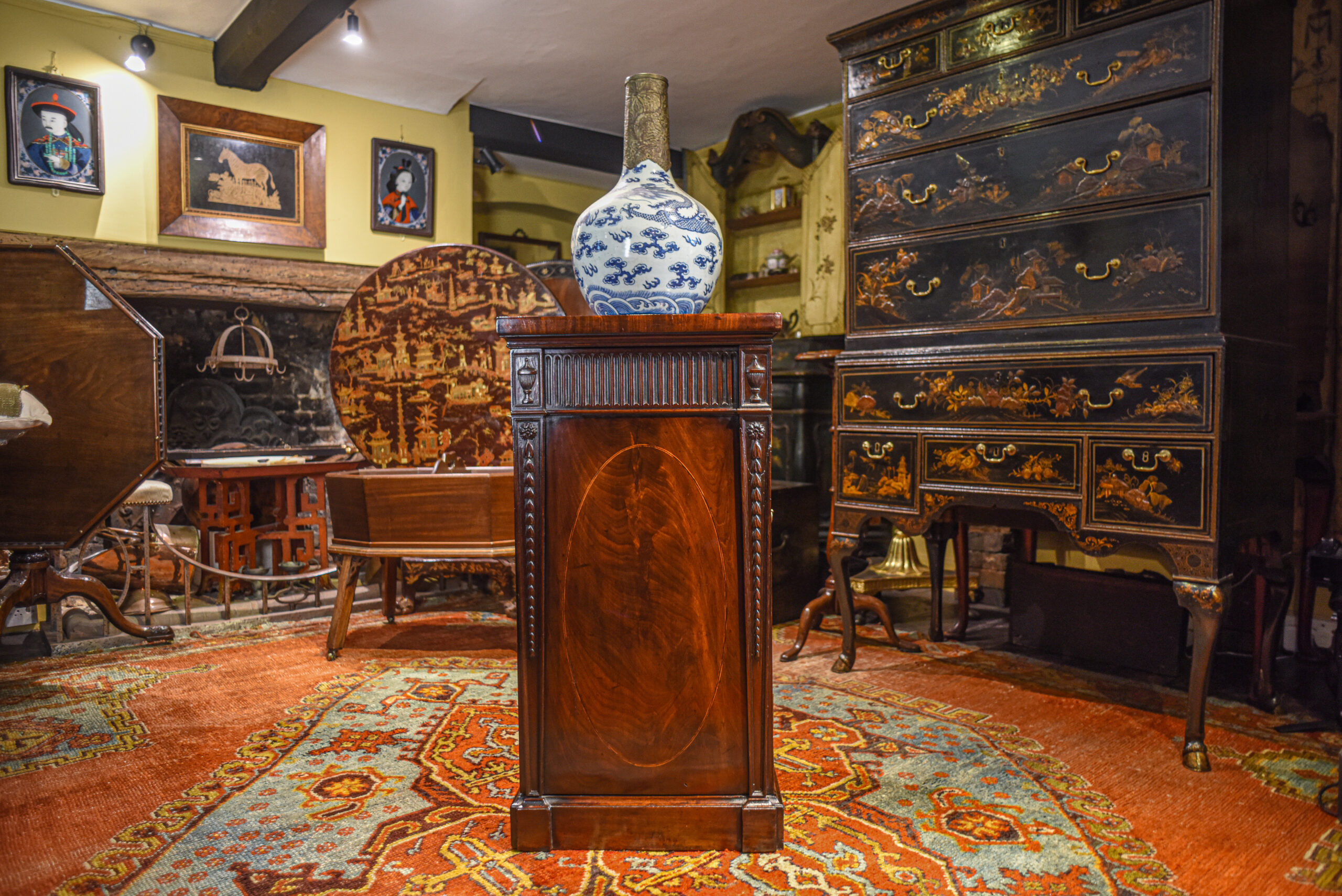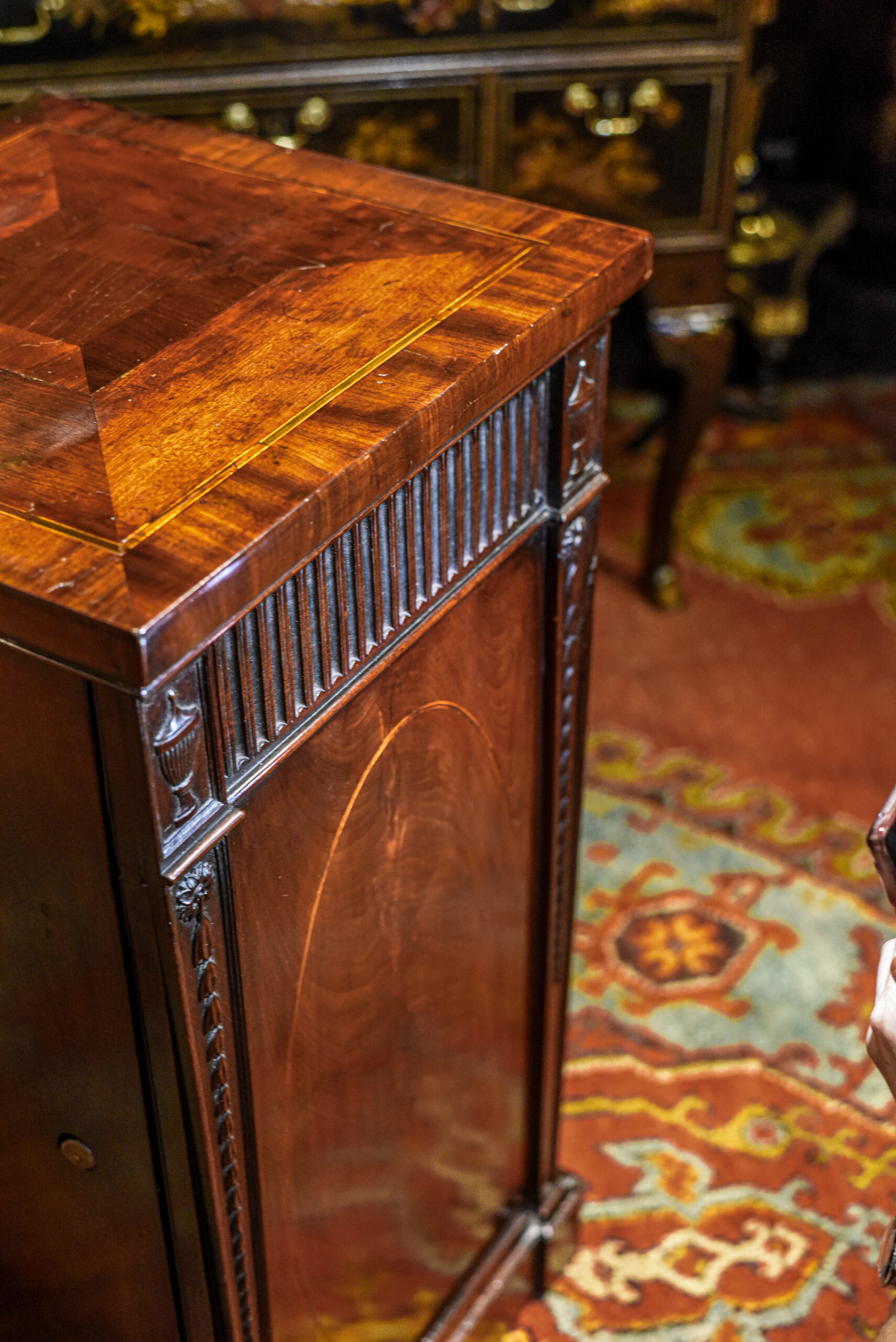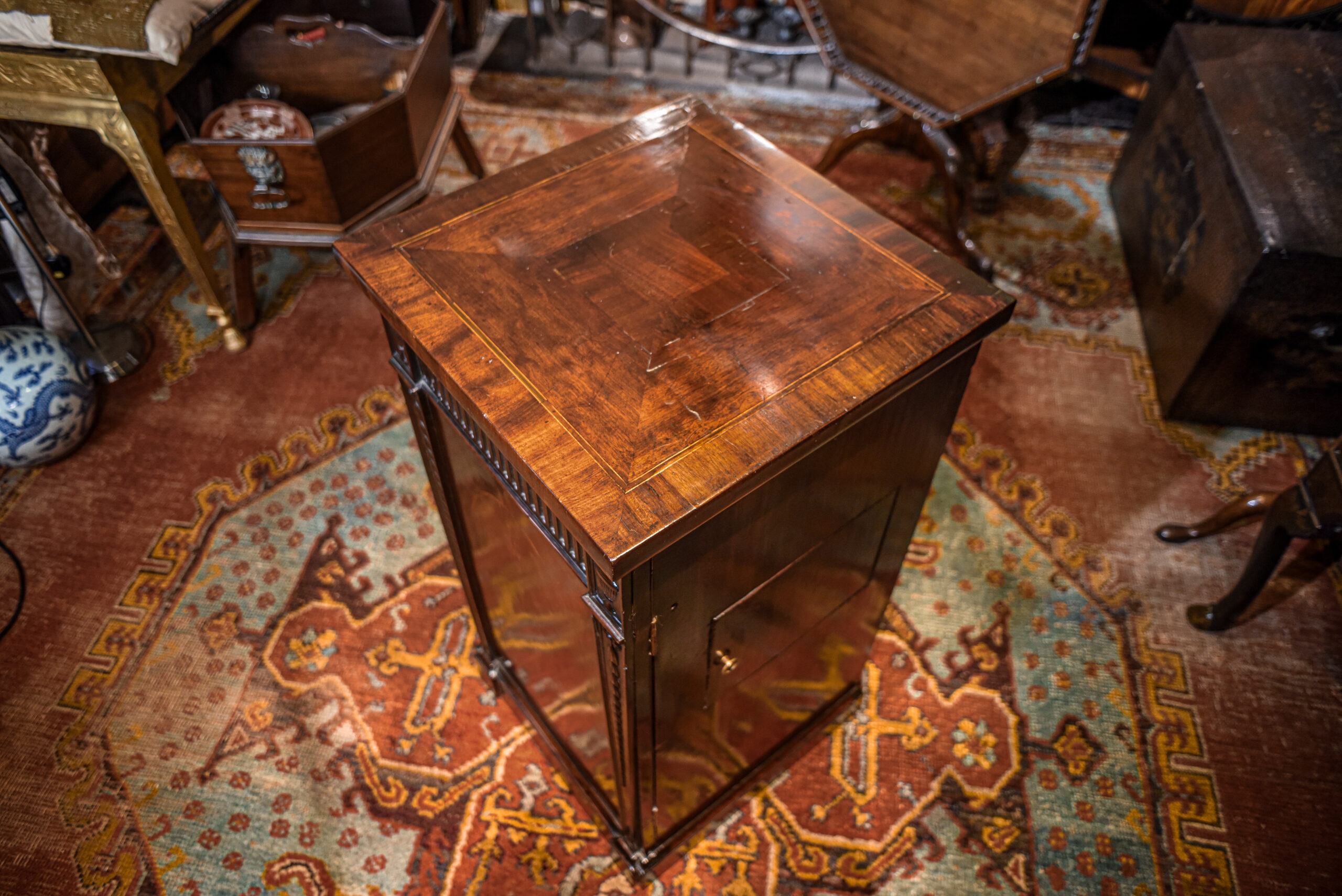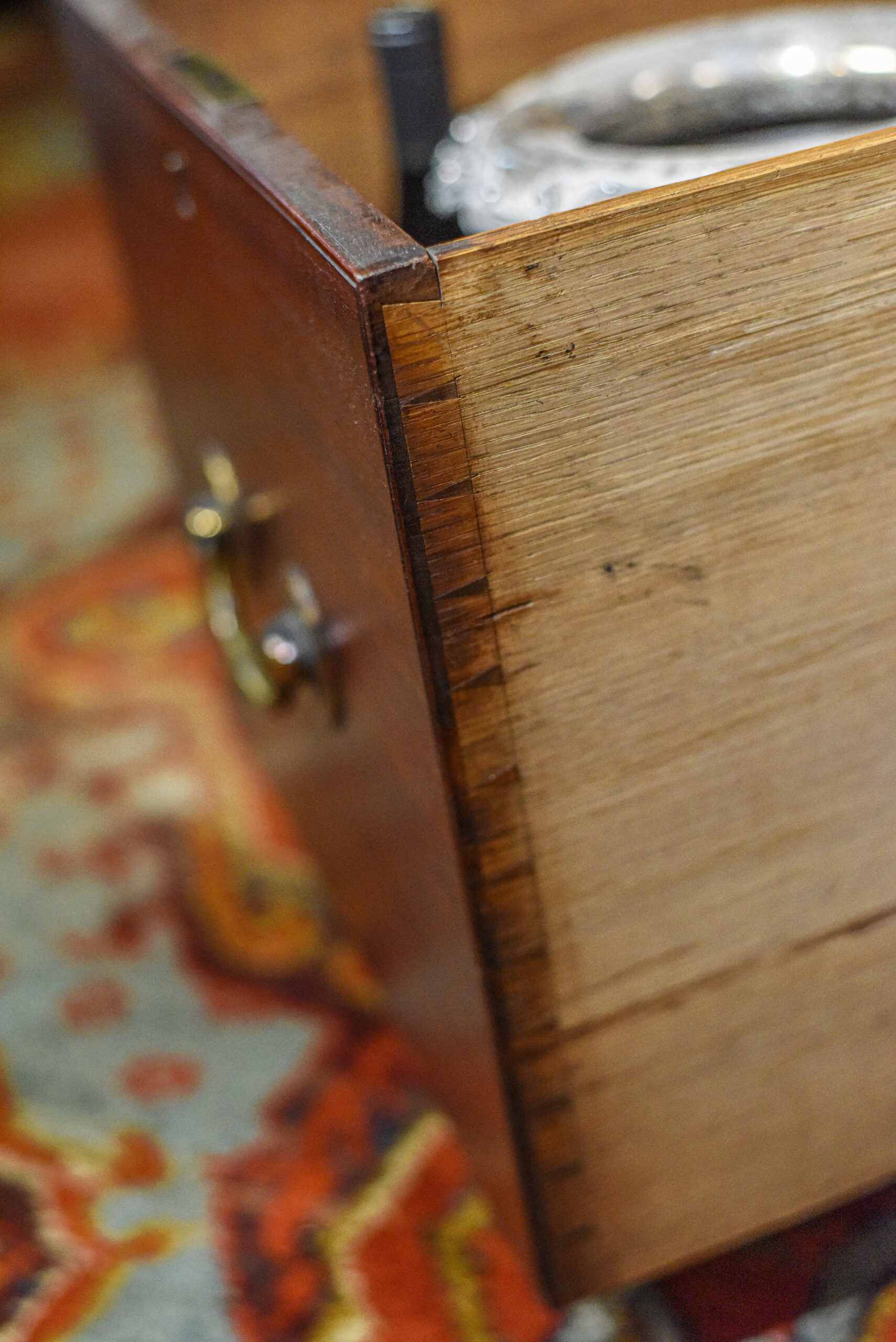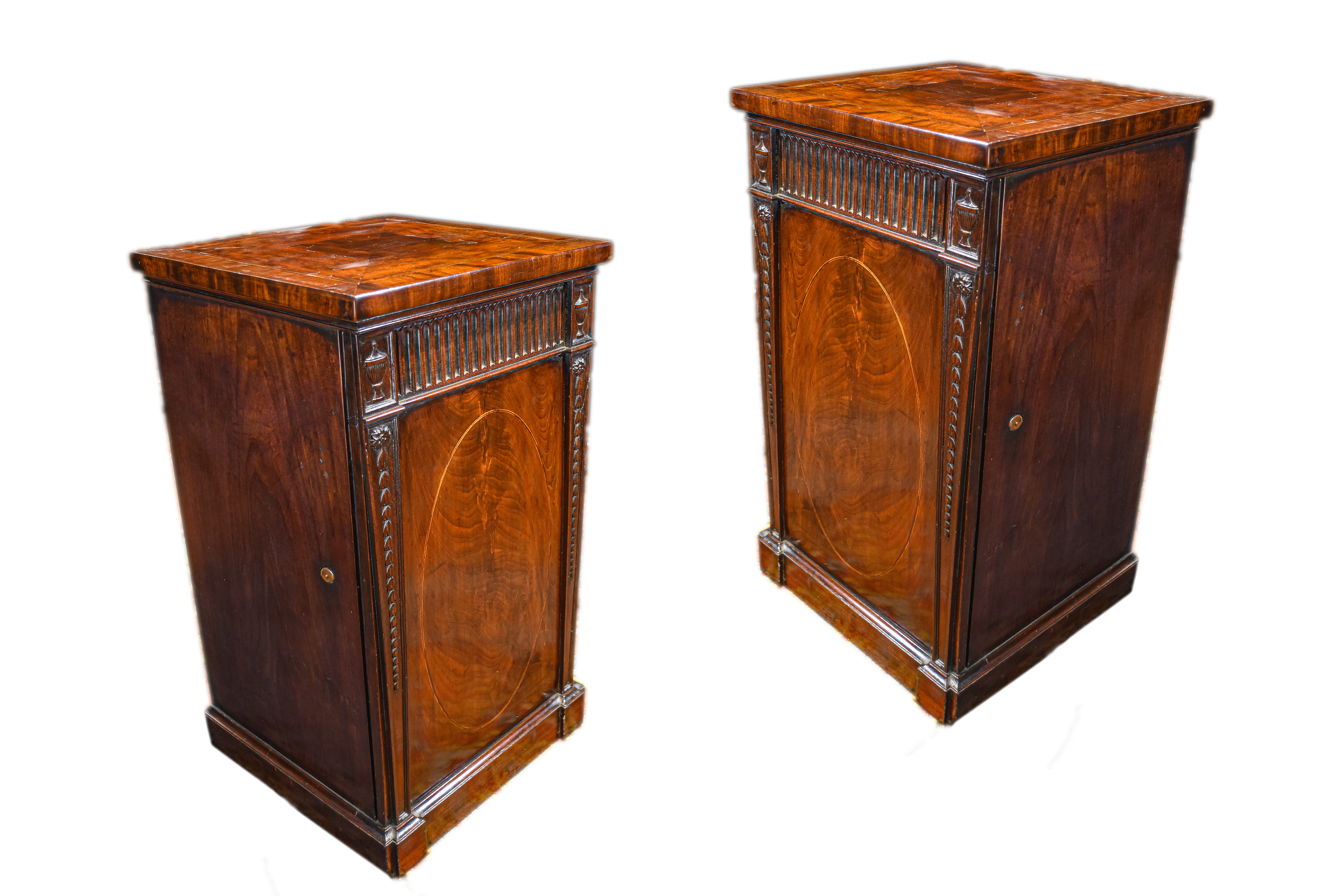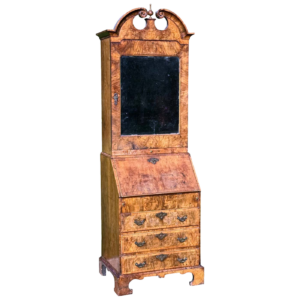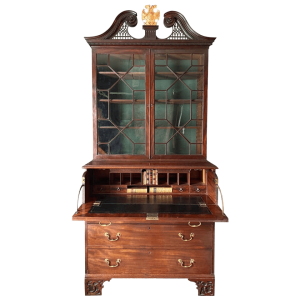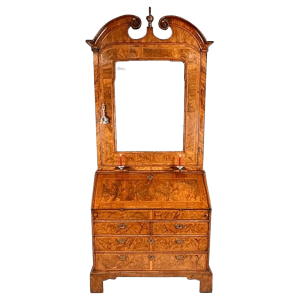Description
A fine pair of English George III-period pedestal cabinets in well-figured mahogany of deep, rich colour and superb patination, attributed to Gillows of Lancaster, circa 1800.
The front-opening doors inlaid with an oval and flanked by very unusual, graduated, carved bell flowers. The frieze is set with finely-carved urns. The top is boldly crossbanded, inlaid and segmented, with the frieze faced with fluting.
All to a very high standard indeed. The front is of inverted-breakfront outline, with elegantly-tapered columns to the angles. Retaining their original swan-neck handles and locks to the internal drawers, two of which are ‘celaret’ with drain holes. One ‘podium’ or ’stand’ has the highly-unusual feature of a side cupboard; perhaps for wine-tasting glasses.
Terrific colour, figuring, patina and condition throughout, and ready to be placed in any room, including the library. These elegant ‘sideboard pedestals’ are ideal for displaying sculpture, objets d’art, urns, flower arrangements, storing wine etc… and flanking a serving table is always a stylish location.
References:
Ralph Edwards CBE FSA, Shorter Dictionary of English Furniture (Fourth edition 1972) states:
‘’Sideboard pedestals… (introduced circa 1760) afforded and opportunity for accomplished classic design. The pedestals supplied some storage room as cellarets or plate-warmers… In the account for Chippendale, Haig and Co., for the furnishing of David Garrick’s house in the Adelphi (1772) one of the mahogany pedestals is described as fitted up for a plate-warmer, the other for water…
A detailed inventory in the royal tradesmen’s accounts (1780) gives a contemporary description of a pair of the fine pedestals supplied to George, Prince of Wales, by William Gates for his apartment in the Queen’s House in St James’s Park (Buckingham Palace).
In Adam’s Works in Architecture (Vol. III, pl. VIII) in a plate of the furniture for Syon House, Middlesex, in which two designs are given for pedestals, the Osterley pedestals… (are) corresponding to the right-hand design [vis. Fig. 6). There is evidence that they were made by John Linnell (q.v.)
…The pedestals in Smith’s Household Furniture (1808)… one serves as a plate-warmer, while the other ’should have a tray capable of hiding six or eight bottles… also a drawer under, containing water to wash glasses during dinner’. M.J.’’. Pp. 480-481, Fig. 6 (Syon House, Middx) [sic] (1972).



